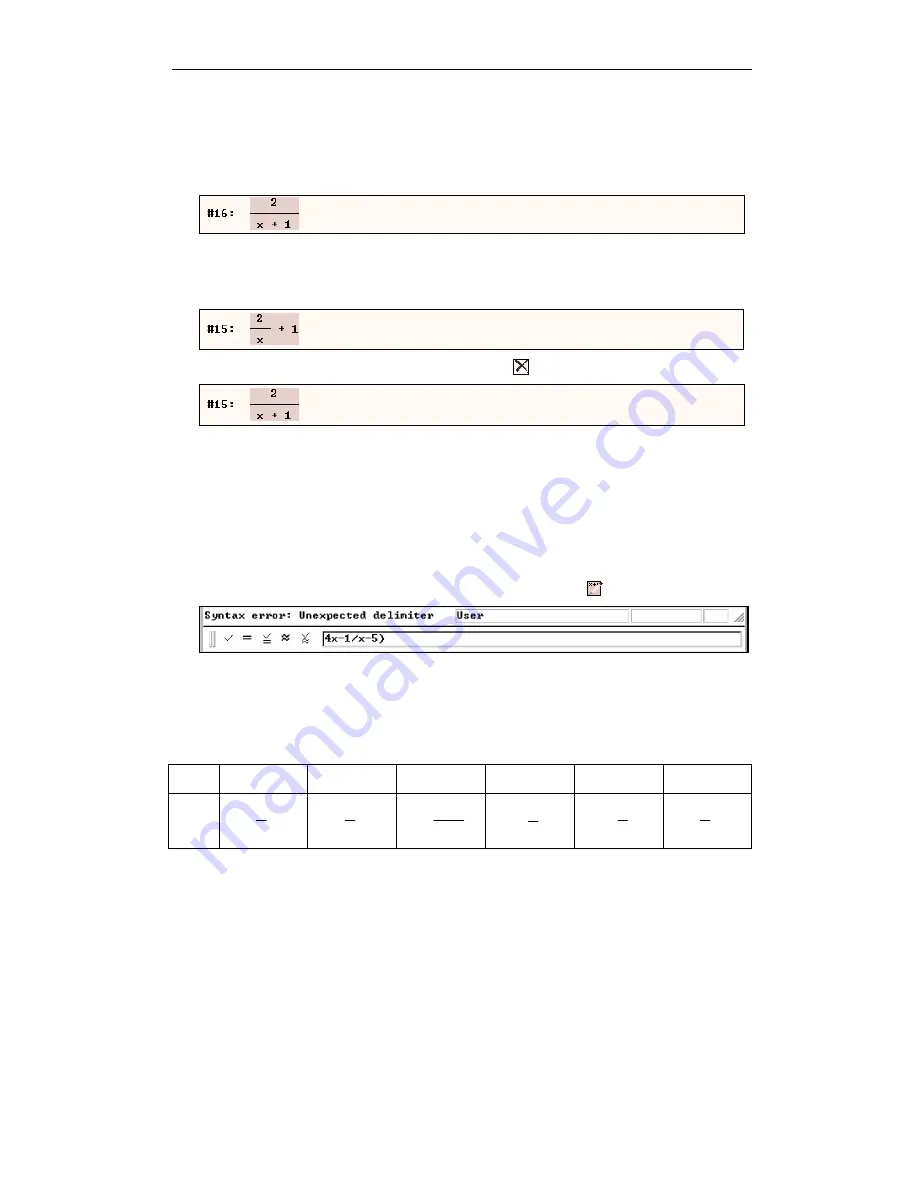
10
Chapter 1: First Steps
When correcting the most recent input, you can take advantage of the fact that a copy of the
most recent input and the focus are still in the entry line.
To edit the expression use the right arrow key
(Æ)
to remove the highlighting. Change the
input to
2/(x+1)
by adding the parentheses, then enter the expression with
(¢)
.
Now it looks correct. Since you don’t need expression #15 any more, delete it.
Prepare for deletion: Highlight expression #15 either with the mouse or with the keyboard’s
arrow keys after moving the focus into the algebra window using
(Esc)
.
Delete expression #15: Use the
Delete Object
button
or press the
(Del)
key.
The expression that was expression #15 disappeared. The expression that was expression #16
has become expression #15. By default, automatic renumbering adjusts expression numbers so
that they begin with #1 and have no gaps.
Errors such as omitting a whole pair of parentheses may change the meaning of an expression,
as was the case in the previous example. If only one parenthesis is omitted, the input becomes a
meaningless character string
,
and D
ERIVE
will issue a warning in the form of an appropriate
syntax error message:
Enter
4x-1/x-5)
after moving the focus into the entry line with
.
D
ERIVE
attempts to position the cursor in front of the expected error. Since a superfluous closing
parenthesis can be spotted while a missing opening parenthesis obviously cannot, the first
alternative is used for the error message. Depending on how the expression should look, you
have to either delete the closing parenthesis or insert an opening parenthesis somewhere before
it. For the above example there are six possible repairs:
input
4x-1/x-5
4x-1/x-(5)
4x-1/(x-5)
4x-(1/x-5)
4(x-1/x-5)
(4x-1/x-5)
output
1
4
5
x
x
− −
1
4
5
x
x
− −
1
4
5
x
x
−
−
1
4
5
x
x
−
−
1
4
5
x
x
− −
1
4
5
x
x
− −
To choose the third variant insert an opening parenthesis between the division operator and the
variable
x
.






























